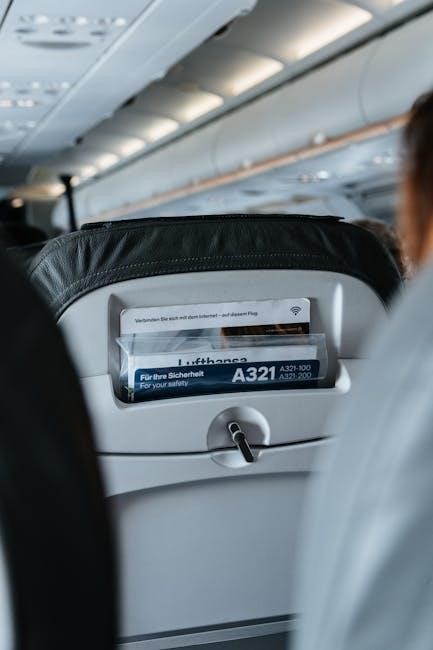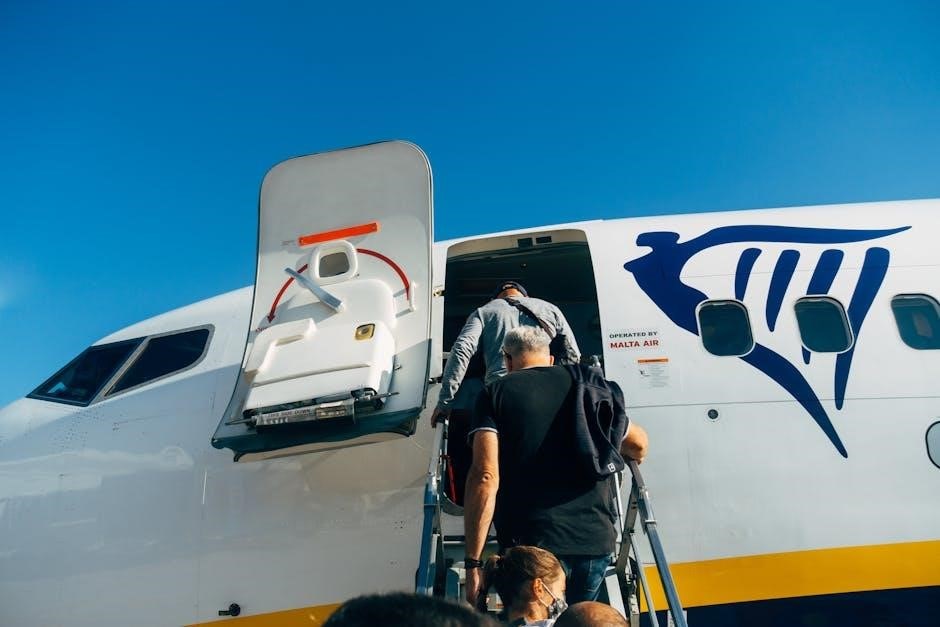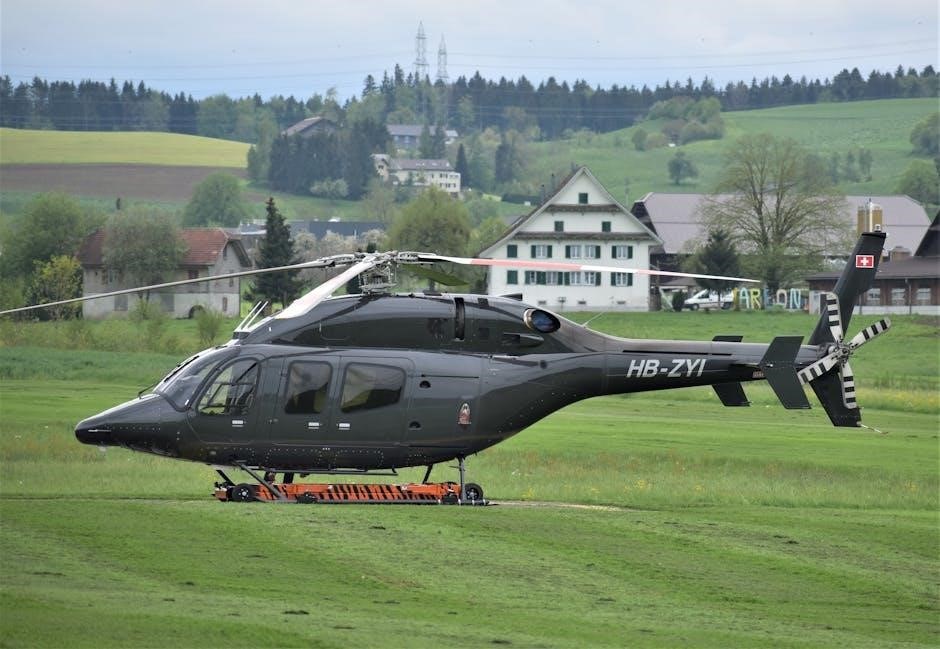pre trip inspection class a pdf
Overview of the Pre-Trip Inspection for Class A Vehicles
The pre-trip inspection ensures safety and compliance for Class A vehicles, covering external and internal checks, including engine, trailer, and brake systems, to guarantee roadworthiness before operation.
Importance of the Pre-Trip Inspection
The pre-trip inspection is critical for ensuring safety and legal compliance. It helps identify potential mechanical issues before they cause accidents or breakdowns, protecting both the driver and other road users. Conducting a thorough inspection also verifies that the vehicle meets regulatory standards, avoiding potential fines or penalties. By addressing problems early, it promotes roadworthiness and reduces the risk of mechanical failures during operation, making it a vital step in responsible commercial driving practices.
Key Components of the Inspection
The pre-trip inspection for Class A vehicles involves a detailed examination of external and internal systems. Key components include checking for leaks, lights and signals, and brake functionality. The engine compartment, coupling systems, and trailer safety are also critical areas. Drivers must ensure all parts are in proper working condition, using a CDL inspection checklist to guide the process. This comprehensive approach ensures road safety and compliance with regulatory requirements, making it essential for every trip.

External Inspection
Check for Leaks under the engine, ensure the vehicle isn’t leaning, and verify trailer safety and proper coupling. Use a checklist to ensure all external components are secure and functioning.
Checking for Leaks and Damage
Begin by inspecting the ground under the engine for signs of leaks, such as oil, coolant, or fuel stains. Walk around the vehicle to check for any visible damage to the tires, wheels, or suspension. Ensure the truck is not leaning to one side, which could indicate a suspension issue or uneven load. Visually examine hoses, belts, and couplings for wear or damage. Use a checklist to methodically verify each component’s condition and ensure no critical systems are compromised before starting the trip.
Verifying Lights and Signals
Ensure all lights and signals are functioning properly, including brake lights, turn signals, hazard lights, and marker lights. Activate each light individually to confirm they are operational. Check that all clearance lights and reflectors are intact and visible. Test the emergency brake lights and ensure the trailer lights are synchronized with the tractor. Use the CDL Vehicle Inspection Checklist to systematically verify each component, ensuring compliance with safety and legal standards before starting the trip.

Internal Inspection
Check the cab for proper function of mirrors, seats, and controls. Inspect the brake system, including the pedal and air gauges, to ensure proper operation and safety standards are met.
Assessing the Cab and Controls
Check the mirrors, seats, and steering wheel for proper adjustment and function. Ensure all instruments and controls, including the brake pedal and accelerator, are operating correctly. Verify the air gauges and low air warning system are functioning properly. Test the horn, wipers, and lights inside the cab. Make sure the seatbelt is in good condition and functional. Ensure no warning lights are illuminated on the dashboard and all systems are ready for safe operation.
Evaluating the Brake System
Check the brake pedal and air gauges to ensure proper function. Depress the pedal and monitor air pressure drop; Class A vehicles must not lose more than 4 psi in one minute. Test the low air warning system by turning off the engine. Inspect the brake shoes or pads and drums for wear. Ensure all brake components are secure and free from leaks. Verify the parking brake engages correctly to maintain safety during stops.

Engine and Coupling Systems
Inspect the engine compartment for leaks and ensure the coupling system securely connects the tractor-trailer. Refer to the CDL checklist for detailed guidance.
Inspecting the Engine Compartment
Start by checking for leaks under the engine and ensuring the truck is not leaning. Inspect the engine compartment for damage or wear. Examine hoses, belts, and the air system for proper function. Verify that all fluid levels, such as oil and coolant, are within the recommended range. Ensure the air gauge does not drop excessively when testing the brake system. Address any issues before starting the trip to ensure safe operation.
Checking the Coupling System
Ensure the coupling system is secure and properly aligned between the tractor and trailer. Verify that the fifth wheel is locked and the kingpin is engaged. Check for any visible damage or wear on the coupling components. Test the air supply lines and electrical connections to ensure proper communication between the tractor and trailer. Make sure all locking pins are in place and functioning correctly. A secure coupling is critical for safe operation and preventing potential detachment during transit.

Trailer and Suspension Inspection
Inspect the trailer for proper attachment, check tires for wear and pressure, ensure cargo is secure, and verify suspension components for damage or misalignment to ensure stability and safety.

Ensuring Trailer Safety
Inspect the coupling system for proper attachment and security. Check trailer tires for wear, damage, and correct inflation. Verify brake connections and test trailer brakes. Ensure cargo is properly secured and distributed. Look for signs of damage or wear on the trailer frame and suspension. Check all lights and signals on the trailer for functionality. Walk around the trailer to identify any leaks or issues. This ensures safe and stable operation during transit.
Examining the Suspension System
Inspect the suspension components for any damage, leaks, or excessive wear. Check the bushings and spring for proper securement. Ensure the tires are correctly inflated and show no signs of uneven wear. Verify the axle alignment and look for any loose or missing bolts. This step ensures the vehicle maintains stability and proper handling during operation, preventing potential safety hazards on the road.

Pre-Trip Inspection Checklist
A comprehensive pre-trip inspection checklist ensures all critical components, such as lights, brakes, suspension, and coupling systems, are thoroughly checked for safety and compliance. Documenting findings is crucial.
Using the CDL Vehicle Inspection Checklist
The CDL Vehicle Inspection Checklist serves as a standardized guide to ensure thorough pre-trip inspections. It covers critical components like lights, brakes, and coupling systems, aiding drivers in identifying potential issues. During the test, the checklist helps verify compliance with safety regulations. Practical tips include checking for leaks, ensuring proper trailer coupling, and documenting all findings. This ensures the vehicle is roadworthy and meets legal standards, promoting safety and regulatory adherence.
Documenting Findings
Accurate documentation of pre-trip inspection findings is crucial for maintaining safety and compliance. Drivers must record all observed issues, ensuring clarity and detail. This includes noting the date, time, and vehicle details, as well as specific defects or concerns. Proper documentation helps in tracking repairs, preparing for regulatory inspections, and ensuring accountability. It also provides a legal record of the vehicle’s condition at the time of inspection, promoting transparency and adherence to safety standards.

Class A Specific Inspection Tips
Focus on coupling systems, air brakes, and tire pressures for Class A vehicles. Ensure thorough checks of fifth-wheel locking and trailer connections to guarantee safe and efficient operation.
Unique Aspects of Class A Vehicles
Class A vehicles, such as tractor-trailers, require specialized inspections due to their size and weight. These include checking the coupling system, fifth-wheel, and air brake connections. Additionally, the trailer’s suspension and landing gear must be thoroughly examined. The complexity of these systems demands a detailed approach to ensure safety and prevent potential failures during operation. Proper inspection techniques are crucial for maintaining control and stability on the road.
Best Practices for Conducting the Inspection
Conducting a thorough pre-trip inspection requires a systematic approach. Always start with a visual check for leaks and damage. Use a checklist to ensure no components are overlooked. Be meticulous when examining critical systems like brakes and lights. Communicate with dispatch or colleagues if unfamiliar with the vehicle. Prioritize safety by wearing PPE and ensuring the vehicle is on level ground. A well-executed inspection not only ensures compliance but also enhances safety and reduces the risk of mechanical failures during operation.

The Role of Safety in Pre-Trip Inspections
Safety is paramount in pre-trip inspections, ensuring vehicles are roadworthy and minimizing risks. It prevents accidents by identifying potential issues and promotes regulatory compliance, safeguarding lives and cargo.
Preventing Accidents Through Thorough Inspections
Thorough pre-trip inspections are crucial for preventing accidents by identifying potential safety hazards. Checking brakes, tires, lights, and fluid levels ensures proper vehicle function, reducing the risk of mechanical failures. Addressing issues like leaks or damaged components prevents breakdowns on the road. Regular inspections also promote compliance with safety regulations, ensuring drivers and other road users are protected. By prioritizing safety checks, drivers can significantly reduce the likelihood of accidents and maintain a safe operating environment.
Legal and Regulatory Compliance
Conducting a pre-trip inspection ensures compliance with federal and state regulations for Class A vehicles. Adhering to the CDL Vehicle Inspection Checklist is mandatory, as failure to comply can result in fines or being placed out of service. Regular inspections verify that all safety standards are met, protecting both the driver and other road users. Compliance also demonstrates a commitment to road safety and legal requirements, minimizing potential legal liabilities and ensuring smooth operations.
